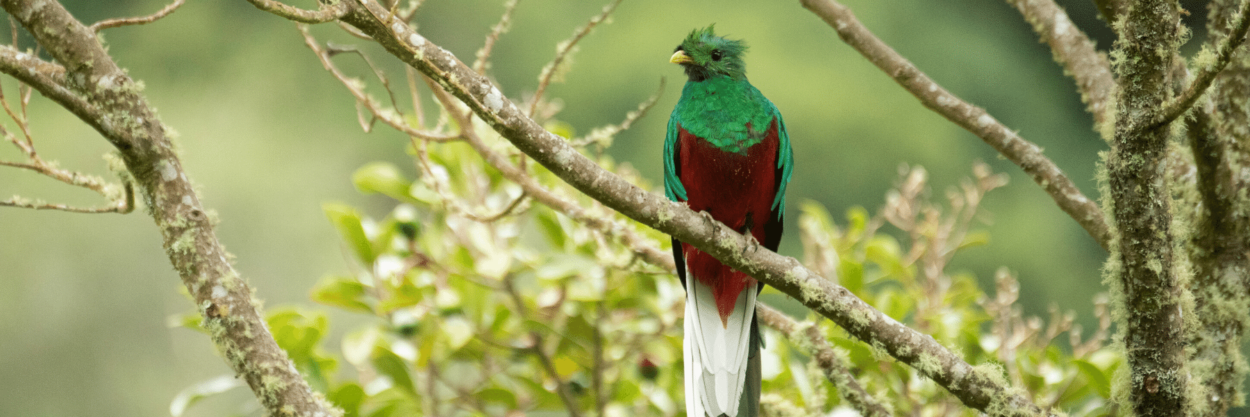
Interested in traveling to Costa Rica in March? Many people choose March for their vacations since Costa Rica is still in the dry season. But just how hot is it in Costa Rica in March? Due to our many microclimates and geographical differences, it is difficult to make sweeping conclusions about the weather. Here is a breakdown of some average weather data for each main Costa Rican region.
The main tourist destinations in the Atlantic region of Costa Rica are Tortuguero, Limon, Cahuita, Puerto Viejo, Sarapiqui, and Arenal Volcano. While Sarapiqui and Arenal Volcano may seem far from the Atlantic coast, they tend to follow the same weather patterns as the Caribbean. Limon, Costa Rica weather in March is rainy, but hot. While there is a high possibility of rain at least half of the days, it rarely rains the whole day. It is common to experience bouts of downpour, followed by bright sun.
The most well-known parts of the central mountainous region of Costa Rica are San Jose, Cartago, and the capitals of Heredia and Alajuela in the center of the country, and Savegre Valley, Chirripo Mountain, and San Gerardo de Dota to the south. San Jose, Costa Rica weather in March is hotter than other months, though nothing compared to the coasts, where humidity is much higher.
While the Southern Pacific region of Costa Rica reaches along an extensive coast, Puntarenas, Manuel Antonio, Dominical, Uvita, and Osa Peninsula are the most commonly visited areas.
Monteverde may be a small region of Costa Rica. Still, it has a unique enough microclimate to merit its own section here.
Guanacaste, Costa Rica weather in March is the hottest in the country, with highs of 89°F (32°C). Liberia, Papagayo Peninsula, Playa Conchal, Tamarindo, Nosara, and Samara are some of the many tourist destinations of this area, known for being the driest region of Costa Rica. Dry is even in the name of its main forest type–the tropical dry forest.

If you travel to Costa Rica in March, you’ll want to pack plenty of warm-weather clothes, like t-shirts, tank tops, shorts, and skirts. Unless you’re planning to visit Monteverde or the central mountainous region, you probably won’t need too much rain gear or sweaters. It will be warm even in the areas that do rain in March, such as the Limon and Puntarenas provinces. Combined with overall humidity, you will still want to wear your warm-weather clothes in Costa Rica in March.
Not sure what to pack for your trip to Costa Rica in March? Here is our ultimate packing guide.

You’ll find high, consistent waves along the Atlantic coast due to cold fronts pushing into the Caribbean. Those surfing Costa Rica in March can find powerful waves at Salsa Brava in Puerto Viejo and Cahuita. The Atlantic coast is known for inconsistent waves normally, therefore if you’re looking to go surfing in Costa Rica in March, you should take care of the great swells.

If you’re planning to travel to Costa Rica in March, you’ll have a chance to spot some really interesting wildlife, from whales to dolphins to unique birds.
There are 252 migratory bird species that enjoy Costa Rica’s warm weather and abundance of food during March.
The Resplendent Quetzal is one of Costa Rica’s most sought-after birds for birdwatching. Look for this red and green bird in Monteverde and around Savegre, in the high mountain ranges. March is mating season for the resplendent quetzal in Costa Rica. If you’re lucky, you’ll catch a mating dance or song.
California humpback whales: December to April
North Atlantic humpback whales: December to March
Some of the most promising places to see whales in March are:
Spinner or common dolphin, December to March
Some dolphin species can be found year-round, including in March. These include bottlenose dolphins and spotted dolphins.
The best places to go dolphin watching are:
Olive Ridley, Hawksbill, Leatherback, and Pacific Green Sea Turtle can all be spotted in Costa Rica in March and year-round.
Check out these places when searching for glimpses of turtles in March.:

Star fruit, passion fruit, guava, strawberries, rambutan, cantaloupes, watermelons, and tamarind are in season in Costa Rica in March. It’s also sugar cane season, which could mean some heavy sugar cane-laden trucks on some Northern and Pacific roads.
Look out for trees in bloom! Depending on your region, there will be pink, orange, purple, and red blossoms starting to emerge in Costa Rica in March.